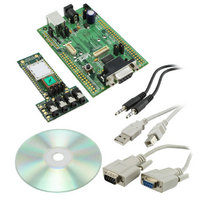DVK-BTM521 Laird Technologies, DVK-BTM521 Datasheet - Page 28

DVK-BTM521
Manufacturer Part Number
DVK-BTM521
Description
BT MM DEV KIT
Manufacturer
Laird Technologies
Type
Transceiver, Bluetoothr
Specifications of DVK-BTM521
Frequency
2.4GHz
Interface Type
RS-232
Processor Series
BTM521
Silicon Manufacturer
Laird Technologies
Kit Application Type
Communication & Networking
Application Sub Type
Bluetooth
Kit Contents
Development Board & Software Tools
Features
Supports CSR
Rohs Compliant
Yes
For Use With/related Products
BTM521
Lead Free Status / RoHS Status
Lead free / RoHS Compliant
Lead Free Status / RoHS Status
Lead free / RoHS Compliant, Lead free / RoHS Compliant
Other names
DVK-BTM521
Available stocks
Company
Part Number
Manufacturer
Quantity
Price
Company:
Part Number:
DVK-BTM521-01
Manufacturer:
LAIRD
Quantity:
7
BTM520/521
Bluetooth
AT COMMAND SET
REFERENCE
28 www.lairdtech.com
®
Multimedia Plus Module
5. ATO {Enter Data Mode} (letter ‘o’)
6. Dropping SSO Connections
7. SSO - Asynchronous Messages
Return to data mode. Assume that the module is in data mode after OK is received. Responds with
an error if there is no Bluetooth SSO connection.
Response:
<cr,lf> CONNECT 123456789012,<<cr,lf>
<cr,lf> CONNECT 123456789012,><cr,lf>
Or
Response: <cr,lf>ERROR nn<cr,lf>
In a conventional telephony modem, a call is normally terminated by first sending a +++ character
sequence enveloped by an escape sequence guard time (of the order of 100 to 1000 milliseconds)
to enter local command and connected mode and then the ATH command.
Laird Technologies’ BTM devices provide a variety of ways of dropping a connection. One method is
similar to the above, but instead a ^^^ character sequence is used. This is to eliminate ambiguity when
a data call is in progress via a mobile phone which was established using the mobile phone’s Bluetooth
AT modem. The second method involves the host dropping the DTR (DSR from the module’s viewpoint)
handshaking line.
Being able to drop a connection using the escape sequence ^^^ has a severe penalty on data
throughput. In fact, the data rate is of the order of 85kbps instead of about 300kbps. To cater for
this performance hit, the device’s connection drop capability is configurable to be in one of two modes.
One mode allows for a connection to be dropped using either method, and the other mode allows for
a connection drop using the DTR method only. By default, the device is in the former mode. This mode
is selected using the S507 register (Appendix, Table 4.1).
To reiterate, the escape sequence is as follows:-
<Guard time><Esc Chr><Guard time><Esc Chr><Guard time><Esc Chr><Guard time>
This means that even when a file transfer is occurring and it happens to be full of <Esc Chr> characters
then it is not going to drop into command mode because, when transferring a file, it is going to happen
as fast as possible and so the inter character gap is going to be significantly shorter than the <Guard time>.
The <Esc Chr> character can be changed via the S2 register and the <Guard time> interval can be
specified via the S12 register (Appendix, Table 4.1).
RX<string>
This response is sent to the host when the unit is in online-command mode and S Register 531 is set
to 3 and data arrives from a peer.
If the data from the string contains non-visual characters (for example ASCII 0 to 31 and ASCII 128
to 255), then those characters are translated into a three character escape sequence starting with ‘\’.
For example, the embedded <cr><lf> sequence would be sent as the six character string \0D\0A.
If the data contains the character ‘“’ then it is sent as \22.
If the data contains the character ‘\’ then it is sent as \5C.
(if it was an incoming connection)
(if it was an outgoing connection)
Laird Technologies



















